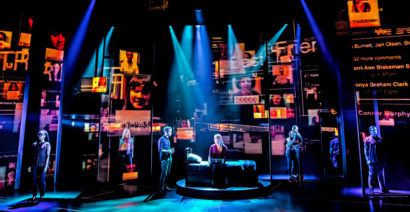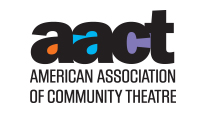Projection Designer
 The projection designer creates all projections shown on stage, including still photos and filmed footage. The designer works with other scenic design elements to create the setting for a production story to unfold.
The projection designer creates all projections shown on stage, including still photos and filmed footage. The designer works with other scenic design elements to create the setting for a production story to unfold.
Conceptual direction and input come from the director or choreographer, who, with the set, costume, lighting, and projection designers, work toward a unified and cohesive look for the show in a way that support the director’s and/or choreographer’s vision.
While the projection designer makes every effort to create content elements before the start of technical rehearsals, the creation of new content may happen during the technical rehearsal process, as well. Thus, it’s important that the projection designer maintains regular contact with the director or choreographer, production manager, technical director, stage manager, and other designers. [Photo: Projection design for the Broadway production of Dear Evan Hanson, courtesy of Playbill]
Typical Responsibilities
The responsibilities of the projection designer typically include:
- Reads the script and makes appropriate notes
- Meets with the director or choreographer, to discuss concepts, design ideas and imagery, and any filming and recording of the cast, costumes, and set elements, either pre-recorded or live, if applicable
- Meets with the set designer and lighting designer to discuss concepts, color, practical fixtures, fly line, and trim height restrictions, masking, etc;
- Produces rough sketches, drawings, storyboard, plans and preliminary section deemed necessary to explain preliminary design requirements.
- Meets with costume designer to discuss fabric color and texture, hats, wigs, etc.
- Meets with the technical director to confirm any production restrictions, and discuss inventory limitations, hanging positions, circuiting, focus, lens, blending and keystone strategy, media server capabilities, etc.
- Becomes acquainted with the blocking of the show, in order to ensure that projection elements are interacting with other elements in the designed and appropriate manner
- Creates the projection designer’s cue list in preliminary form, to be updated throughout the process
- Creates content for the production, which may include sourcing, purchasing, and editing stock content, sourcing, purchasing, and editing other pre-existing content, creating original content in any medium or form, filming content, or any other form as needed for the artistic vision.
- Meets with the stage manager (and director and/or choreographer, if necessary) prior to technical rehearsals in order to develop initial cue placement and timing in the script, with the understanding that cues and/or timings may change during the development of the technical rehearsals
- Submits final plans and lists, as needed. Works with production manager to create a list of all purchased and licensed content in use, verifying appropriate usage rights and licenses for the performance
- Is present during the hang and focus time, to answer any questions and ensure the accuracy of the hang, including equipment type, location, and focus
- Provides as many projection cues as possible with the director and stage manager; preparation to include storyboards detailing the source, type, length, and quality of each content source and mapping against time, preliminary cue lists, pre-set looks previously recorded, etc.
- Works through the show with the director or choreographer, cue by cue, building cue states and ensuring their accurate placement in the stage manager’s script
>> For more insights, see "What I Do: Projections Design with David Bengali," on the website of The Kennedy Center.




